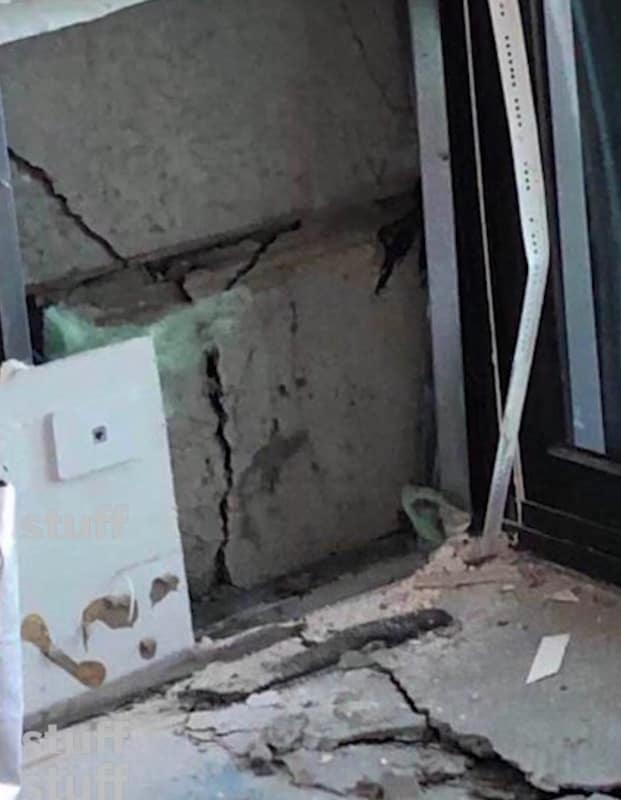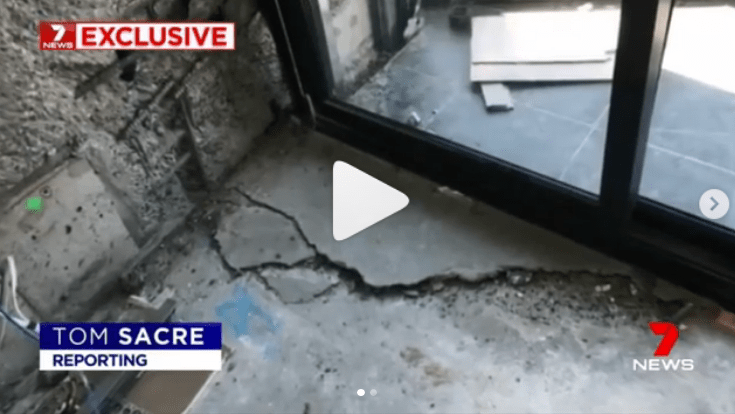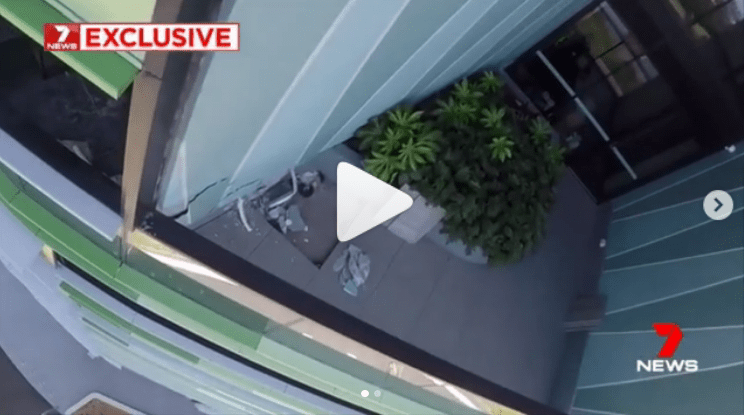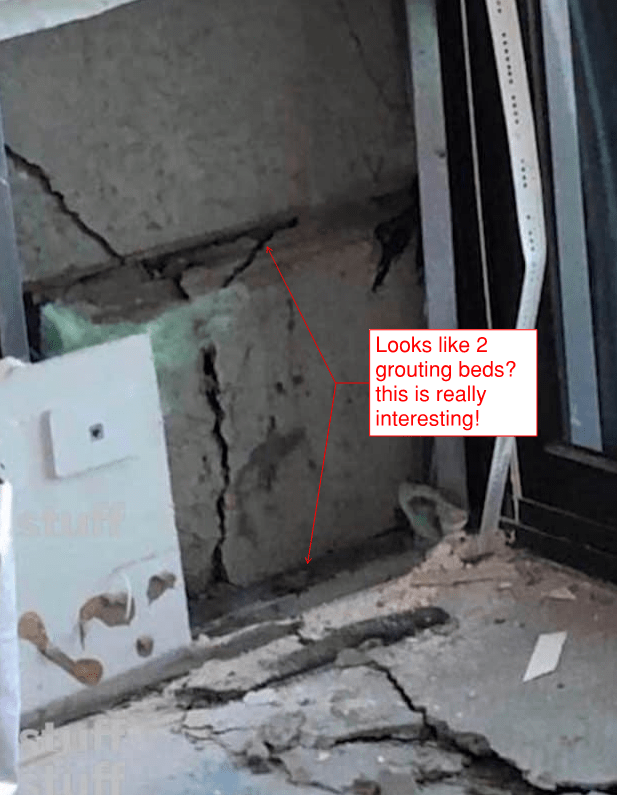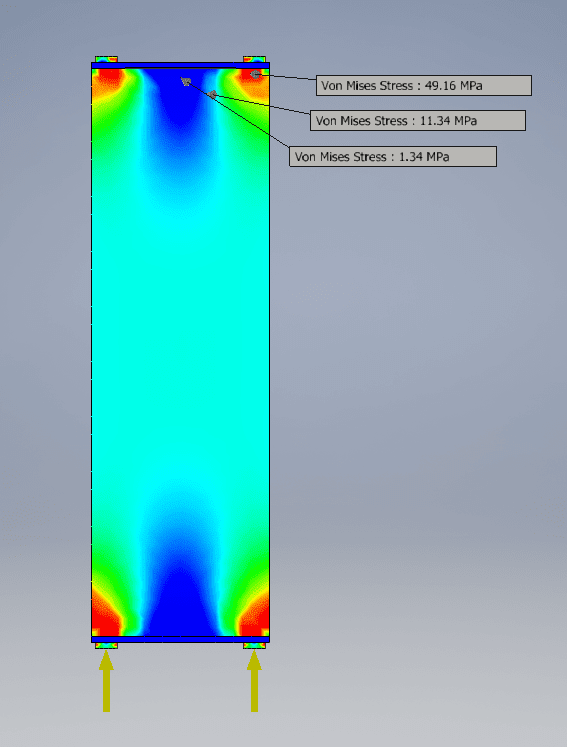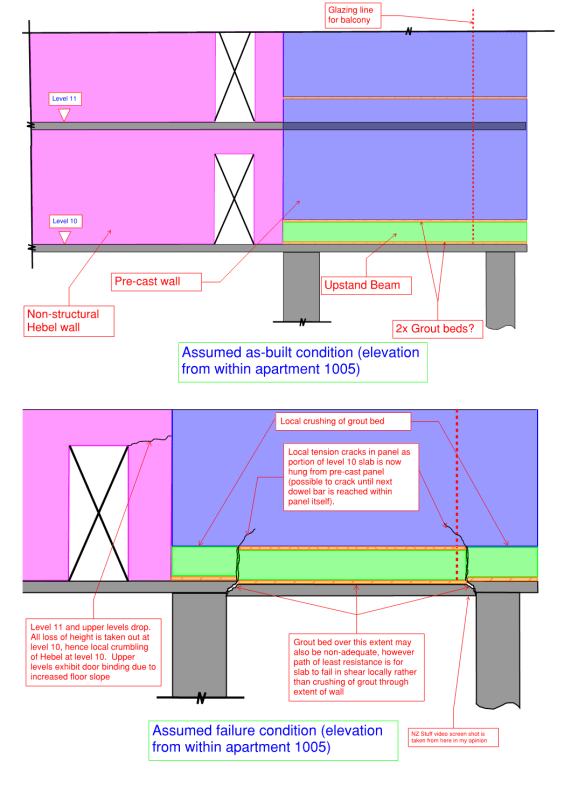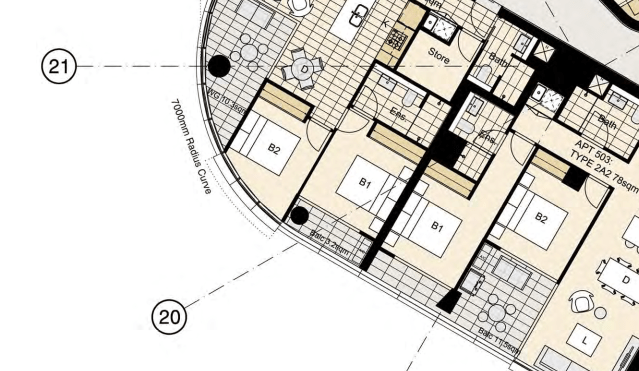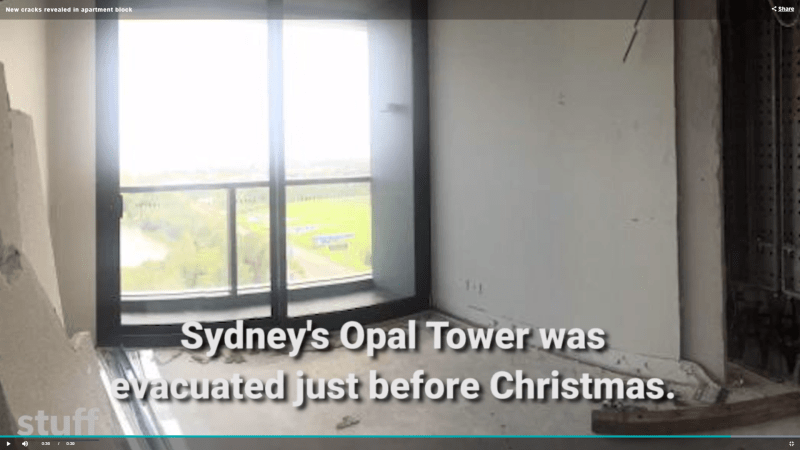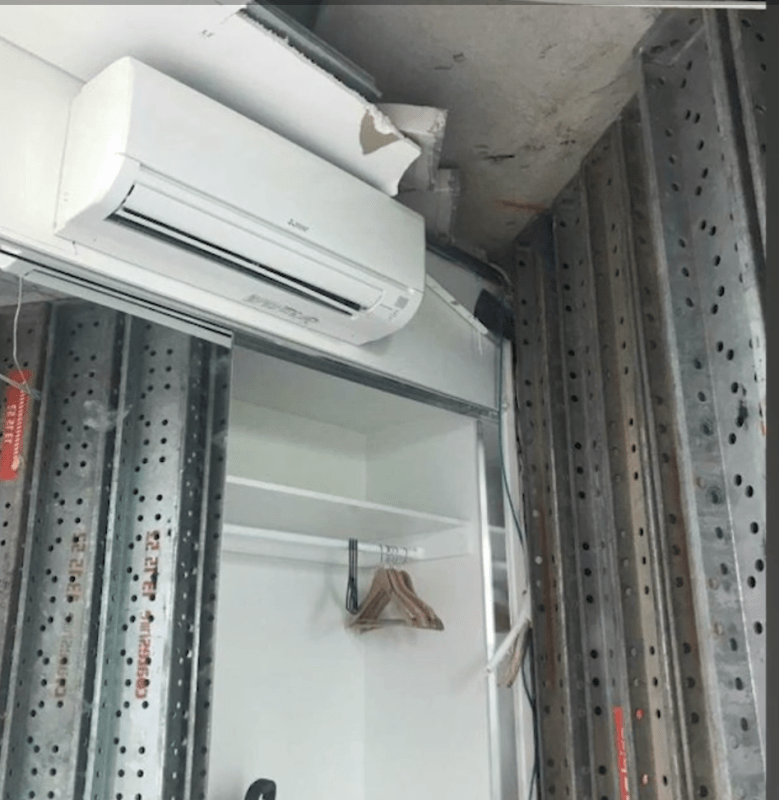epoxybot said:
I pieced this photo together from the NZ Stuff video. There is more going on than Agent 666's screen grab shows.
This photo really makes things very interesting.
I believe this photo is taken just inside the balcony at apartment 1005 (level 10). It is the blind side to the image I showed (from the garden side) on an earlier post of mine. It definitely looks like a beam of sorts, but there appears to be two joint locations (possible 2 grouting beds) which would mean this beam may also be pre-cast of sorts(?)
The shear failure in the slab makes sense considering the following sequence of possible events:
1. Local failure occurs at the wall/grout immediately above the supporting columns under which is the point of most significant stress as pointed out by Human909's diagram earlier, which I'll re-produce here (I'm sticking to my theory of in-sufficient grout but for those playing at home who don't like blame to be given to the contractor this could equally be due to under-designed wall thickness or under-specified grout and/or wall grade from the design engineer!!).
2. Once local failure occurs over the support columns, load then wants to transfer itself, via bending, to the upstand beam and slab system (mind you both of which would not have been designed as transfer elements considering their small depth in comparison to apparent applied load).
3. The up-stand beam and slab however can not go into bending because of the significantly stiff wall above, therefore everything is taken out in shear at the critical failure planes some distance away from the internal faces of the support columns below.
4. The upstand and slab system can not take the shear load so they fail, in shear. Local shear failure would then mean that a portion of the level 10 slab at this location is now "hung" from the support wall above.
5. By this time, the wall has failed enough to increase its bearing contact area with critical surface of the up-stand beam, this is either through closing up of grout voids and/or blasting off enough of the base of the wall to be rid of the chamfer you often find at the base of panels to prevent cracking/chipping in transit, thus increasing its contact area.
6. Local failure of the wall means all levels above drop by however much distance the wall/grout crushed. This explains the Hebel destruction at level 10 immediately adjacent and reports of doors sticking in their doorjambs on levels above.

